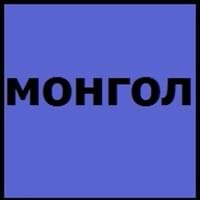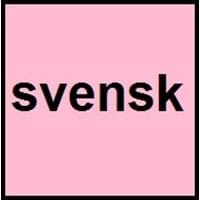Countries
China, Mongolia
European Union, Finland, Nordic Council, Sweden
National Language
China, Mongolia
Sweden
Second Language
Not spoken in any of the countries
Finland
Speaking Continents
Asia
Antartica, Europe
Minority Language
Not spoken in any of the countries
Australia, Belgium, Canada, France, Germany, Netherlands, Spain, Switzerland, United Kingdom, United States of America
Regulated By
Council for Language and Literature Work, State Language Council (Mongolia)
Institute for the Languages of Finland, Swedish Academy, Swedish Language Council
Interesting Facts
- Mongolian was first written using Phagspa script in late 13th century.
- There is no connection between Mongolian, Japanese and Korean, but still in terms of grammar and sentence structure they are very similar.
- In Swedish language, article comes after noun.
- Most of the words in Swedish language began "S" than any other letter.
Similar To
Turkish Language
Norwegian and Danish Language
Derived From
Not Available
Old Norse Language
Alphabets in
Mongolian-Alphabets.jpg#200
Swedish-Aphabets.jpg#200
Scripts
Mongolian alphabets: Traditional Mongolian script
Latin
Writing Direction
Not Available
Left-To-Right, Horizontal
Hello
Сайн уу (Sain uu)
hej
Thank You
та бүхэнд баярлалаа (ta bükhend bayarlalaa)
tacka dig
How Are You?
Юу байна? (Yuu baina?)
hur mår du
Good Night
Сайн шөнийн (Sain shöniin)
godnatt
Good Evening
Сайн үдэш (Sain üdesh)
god kväll
Good Afternoon
Сайн Үдээс хойш (Sain Üdees khoish)
god eftermiddag
Good Morning
Өглөөний мэнд (Öglöönii mend)
god morgon
Please
Хэрэв (Kherev)
vänligen
Sorry
Уучлаарай (Uuchlaarai)
ledsen
Bye
Баяртай (Bayartai)
hej då
I Love You
Би чамд хайртай (Bi chamd khairtai)
jag älskar dig
Excuse Me
Өршөөгөөрэй (Örshöögöörei)
ursäkta mig
Dialect 1
Khalkha Mongolian
Dialects
Where They Speak
Mongolia
Gabon
How Many People Speak
Not Available
Dialect 2
Ordos Mongolian
Dialects
Where They Speak
Mongolia
Georgia
Dialect 3
Khorchin Mongolian
Dialects
Where They Speak
Mongolia
France
How Many People Speak
Not Available
Speaking Population
Not Available
Second Language Speakers
Not Available
Native Name
монгол (mongol) монгол хэл (mongol hêl)
Svenska
Alternative Names
Not Available
Ruotsi, Svenska
French Name
mongol
suédois
German Name
Mongolisch
Schwedisch
Pronunciation
/mɔŋɢɔ̆ɮ xiɮ/
[ˈsvɛ̂nskâ]
Ethnicity
Not Available
Swedes, Finland Swedes
Origin
1224-1225
13th Century
Language Family
Mongolic family
Indo-European Family
Subgroup
Mongolian
Germanic
Branch
Not Available
Northern (Scandinavian)
Early Forms
Middle Mongolian, Classical Mongolian, Mongolian
Old Swedish
Standard Forms
Khalkha, Southern Mongolian
Standard Swedish
Language Position
Not Available
Signed Forms
Mongolian Sign Language
Tecknad svenska, ("Signed Swedish")
Scope
Macrolanguage
Individual
ISO 639 6
Not Available
Not Available
Glottocode
mong1331
swed1254
Linguasphere
part of 44-BAA-b
52-AAA-ck to -cw
Language Type
Living
Living
Language Linguistic Typology
Subject-Object-Verb
Subject-Verb-Object
Language Morphological Typology
Not Available
Not Available
Mongolian and Swedish Greetings
People around the world use different languages to interact with each other. Even if we cannot communicate fluently in any language, it will always be beneficial to know about some of the common greetings or phrases from that language. This is where Mongolian and Swedish greetings helps you to understand basic phrases in Mongolian and Swedish language. Mongolian word for "Hello" is Сайн уу (Sain uu) or Swedish word for "Thank You" is tacka dig. Find more of such common Mongolian Greetings and Swedish Greetings. These greetings will help you to be more confident when conversing with natives that speak these languages.
Mongolian vs Swedish Difficulty
The Mongolian vs Swedish difficulty level basically depends on the number of Mongolian Alphabets and Swedish Alphabets. Also the number of vowels and consonants in the language plays an important role in deciding the difficulty level of that language. The important points to be considered when we compare Mongolian and Swedish are the origin, speaking countries, language family, different greetings, speaking population of these languages. Want to know in Mongolian and Swedish, which language is harder to learn? Time required to learn Mongolian is 44 weeks while to learn Swedish time required is 24 weeks.





